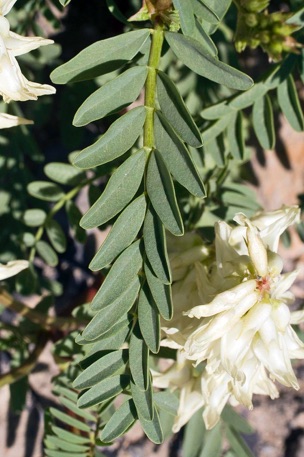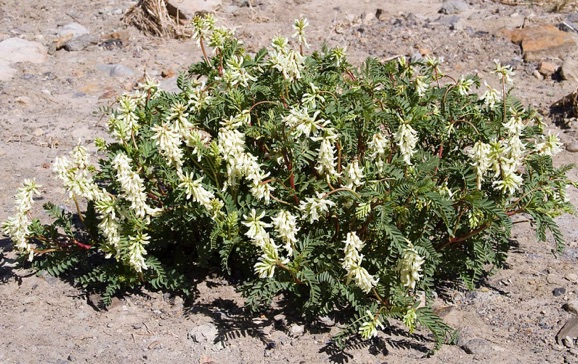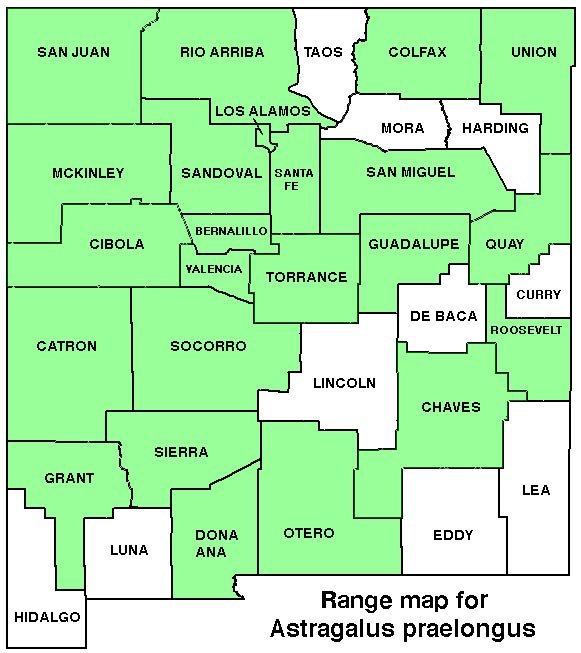WILDFLOWERS OF NEW MEXICO

With dense clusters of reddish to green stems reaching 3-feet tall and numerous spikes with drooping pale-yellow flowers, this widespread milkvetch has a fetid odor, as the common name implies. Note the foliage is hairless throughout. Selenium concentrated in the foliage is toxic to livestock.
FLOWERS: April–August. Spike-like flower stalks have 10–33 pale yellow to white flowers 5/8–1-inch long (15–24 mm) with 5 petals; 1 upward slanting banner, 2 side wing petals, 2 fused keel petals shorter than the wings and often with a dark tip. Fruit a tubular, inflated pod 3/4–1 5/8-inches long (18–42 mm), 3/16–1-inch (5–25 mm) wide.
LEAVES: Alternate, pinnately compound. Blades 1 3/16–8 3/4-inches (3–22 cm) long; 7–33 leaflets oval to lance-shaped, 1/8–2-inches (3–50 mm) long with rounded bottom, pointed tip, hairless on top, few hairs on bottom.
HABITAT: Selenium rich clay, sandy, silty soils, roadsides, disturbed areas; desert shrub, pinyon-juniper woodlands.
ELEVATION: 3,900–7,200 feet.
RANGE: AZ, CO, NM, NV, UT, TX.
SIMILAR SPECIES: 2 varieties in NM with slight pod differences: var. praelongus mostly eastern half NM; var. ellisiae mostly western 1/2 NM. Giant Milkvetch, A. giganteus, rare in so. NM mountains, has yellow flowers but is densely hairy throughout.
NM COUNTIES: Nearly statewide in low- to mid elevation, dry habitats in selenium soils: Bernalillo, Catron, Chaves, Cibola, Colfax, Dona Ana, Grant, Guadalupe, Los Alamos, McKinley, Otero, Quay, Rio Arriba, Roosevelt, San Juan, San Miguel, Santa Fe, Sandoval, Sierra, Socorro, Torrance, Union, Valencia..

STINKING MILKVETCH
ASTRAGALUS PRAELONGUS
Pea Family, Fabaceae
Perennial herb



THE CONTENTS OF THIS WEBSITE ARE COPYRIGHTED AND CANNOT BE USED
WITHOUT PERMISSION OF GEORGE OXFORD MILLER



EMAIL ME